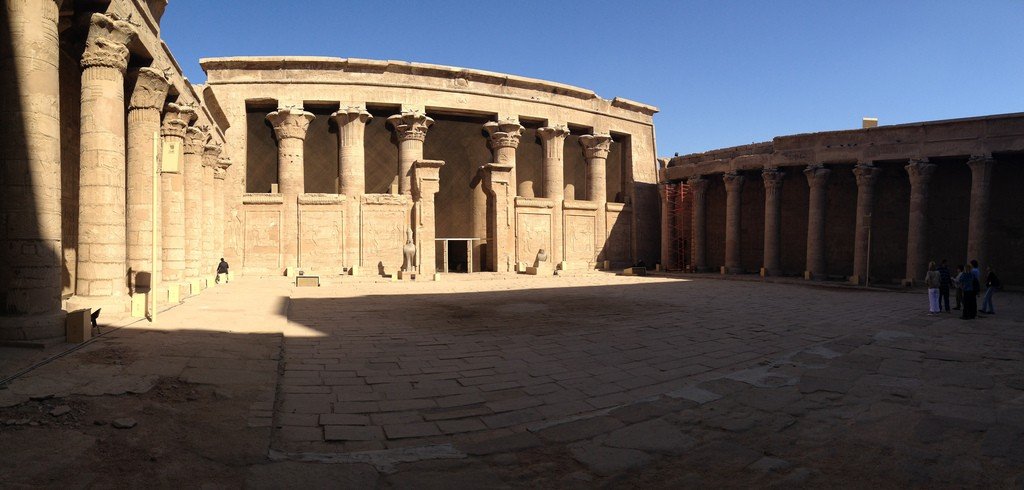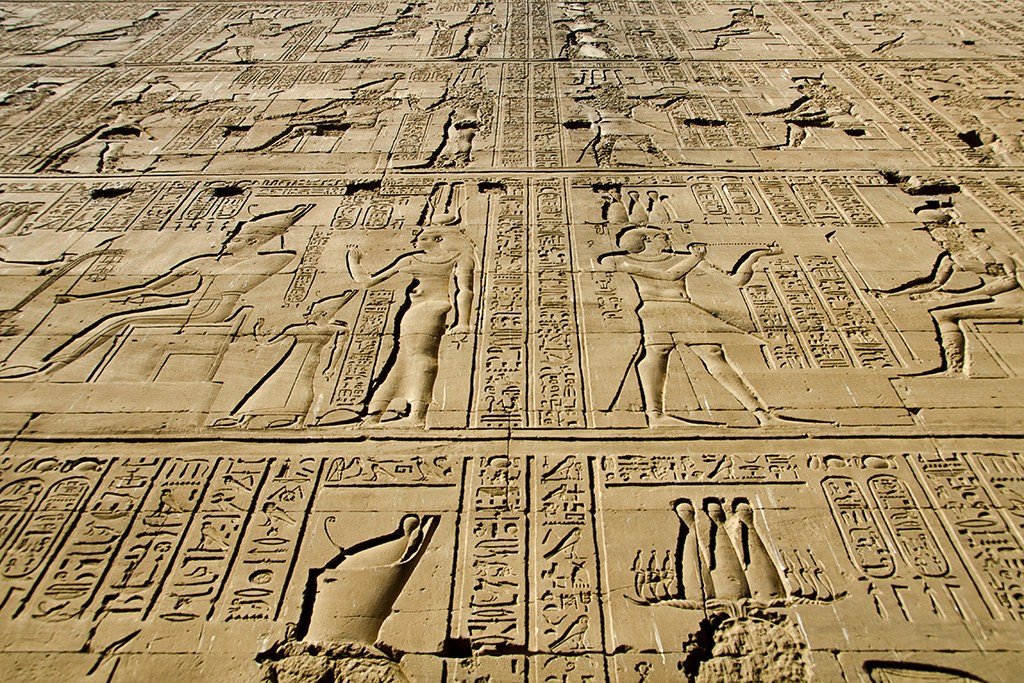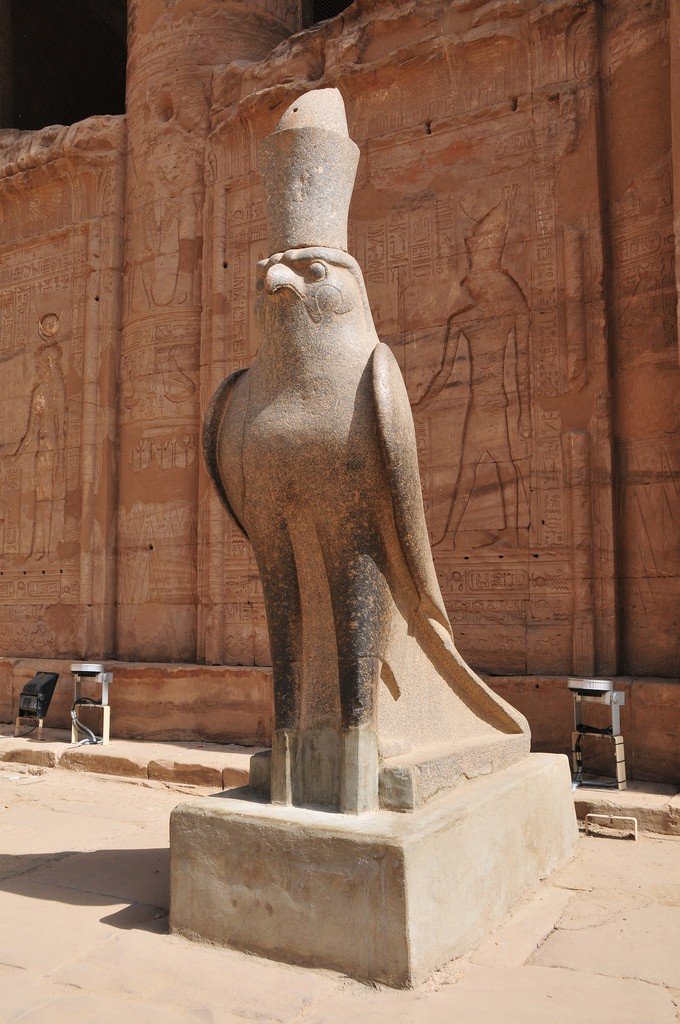Temple of Edfu
The Temple of Edfu is one of the best preserved temples in Egypt, and it is also considered the second largest temple after the Karnak complex. It was built during the reign of the Ptolemies and is dedicated to Horus, the falcon-headed god. It was under construction from 237-57 B.C. (Open daily 7 a.m.-5 p.m., in summer until 6 p.m.).










General Information
Legend has it that the temple was built on the site where Horus avenged Set for the death of his father Osiris. This complex is only the latest of many to be built on this site. It is believed that the original structure that housed the statue of Horus was a prehistoric grass hut. The last temple built at Edfu is built of sandstone on the site of a smaller temple.
.
The masterpiece was almost completely covered by sand, so that only the entrance pylon was visible. Excavations revealed that the temple was preserved in near perfect condition.
.
The Temple of Edfu was built in the classical Egyptian style and has changed little since it was rebuilt.
.The pylon at the entrance of the temple shows 6 winged deities, each slightly different from the others. At the entrance to the temple is a stunning 3 m high statue of Horus carved from black granite.
Behind the pylon is a courtyard accompanied by two hypostyle halls and a sanctuary. The entire structure is enclosed by a retaining wall with a narrow corridor that allows visitors to study the carvings on the outer walls.
.
There are numerous inscriptions and images on all walls inside and outside: the myth of Horus conquering his enemies (inner part of the western wall), hymns to Horus (inner part of the northern wall), an account of the construction, a calendar and statutes of local festivals, gift records, and so on. In Edfu Horus was depicted as a winged disk, a falcon, sometimes a man with a falcon’s head. In the inscriptions of Edfu he was also Horus-Ra; temple reliefs emphasize Horus’ close association with his father Osiris, mother Isis, and Hathor. These inscriptions are of great importance to Egyptian philology, as they represent one of the largest collections of hieroglyphic texts from Greco-Roman times.
.
Every summer, the priests of the temple of Dendera, the center of worship of the goddess Hathor, sent her statue on a special ship – a ceremonial barque – to the temple at Edfu, which meant that Horus and Hathor exchanged conjugal visits. Every night the god and goddess were supposedly secluded. A colonnade in the mamissa, or birth house, and reliefs depicting the birth of Harsomt, the son of Horus and Hathor, are still preserved.
.Next to the large hypostyle hall is a second smaller hypostyle, followed by the vestibule and finally the sanctuary. In the center of the sanctuary, a small granite tomb once held the sacred rook of Horus himself. The struggle between Horus and his evil uncle Seth (who killed Osiris, Horus’ father) is recreated in images in the southwestern part of the temple. This shows how strongly the Egyptians believed in the “triumph of good over evil” in their daily behavior. The priests washed this statue, clothed it, perfumed it with incense, fed it, and entertained it.
The sanctuary is surrounded by smaller prayer rooms and chambers, tombs and halls, some of which are dedicated to the god Osiris or to the goddess Mehit, who guards the soul’s path on its journey to eternal life.
.